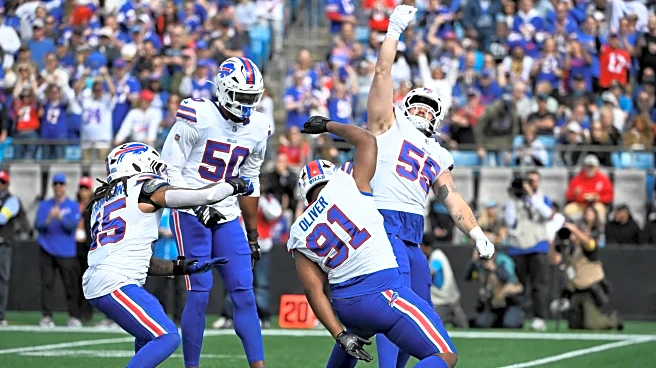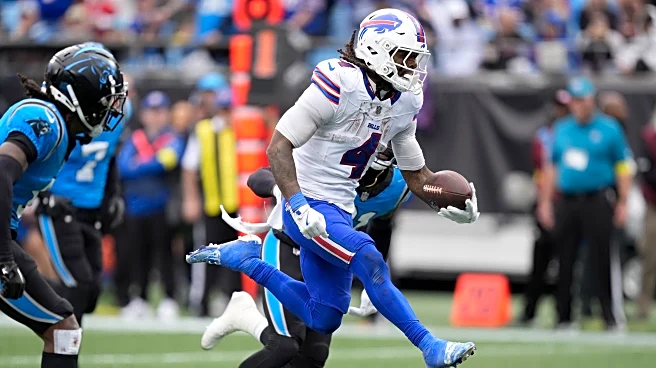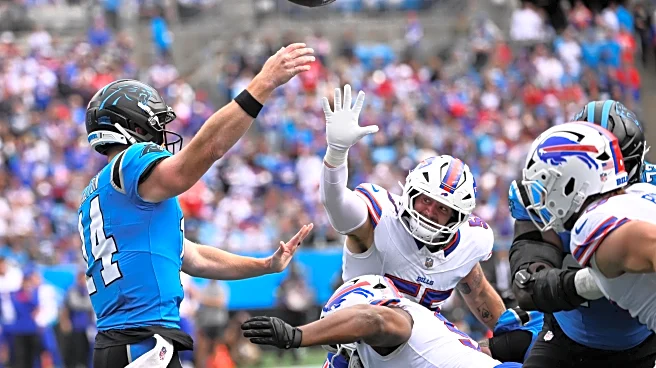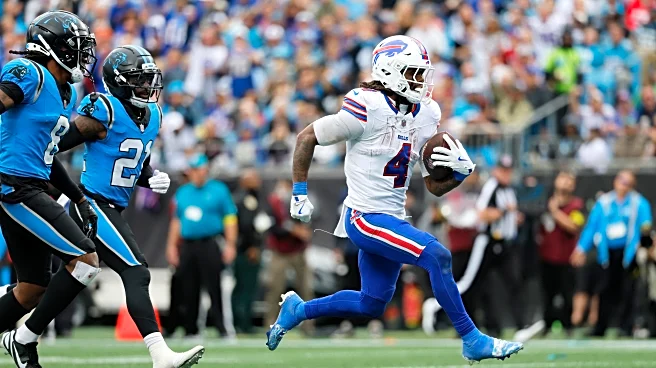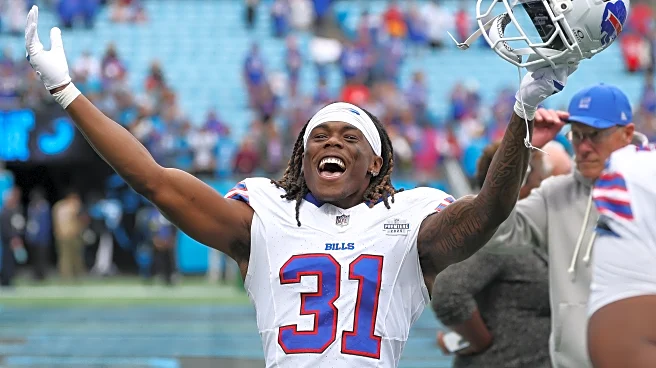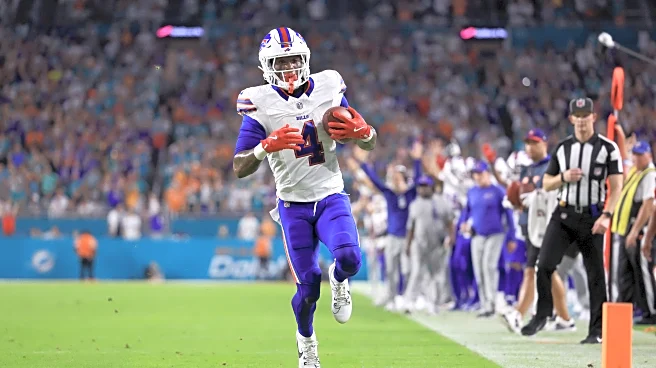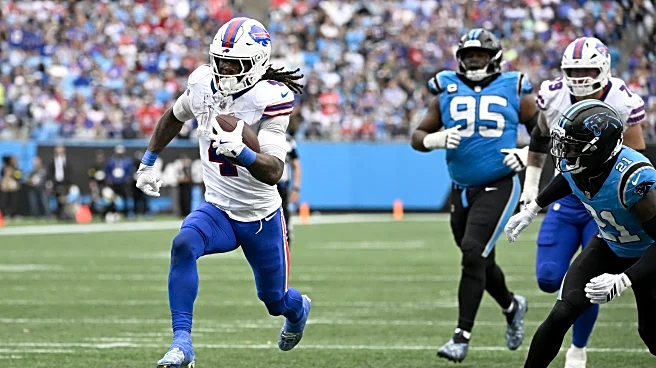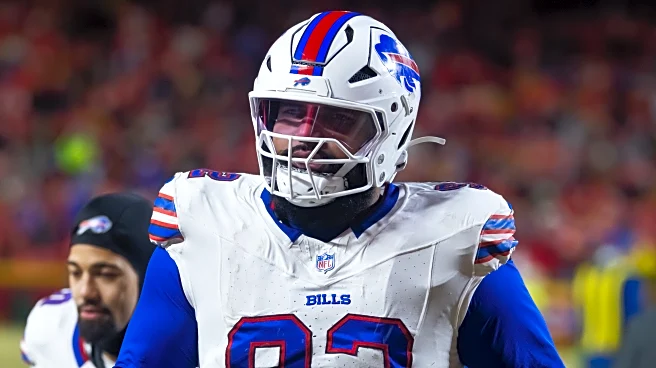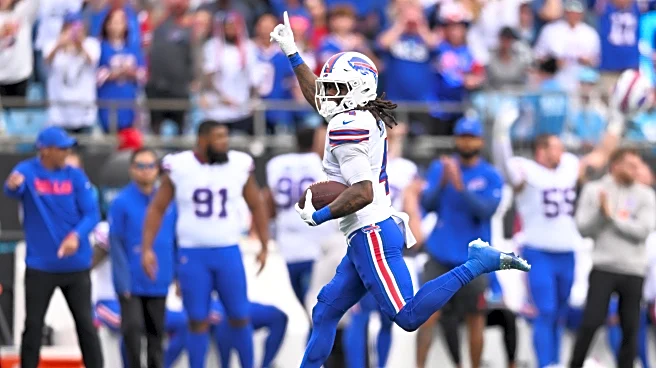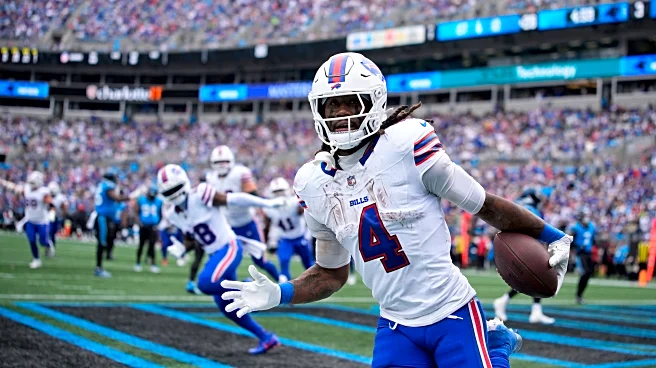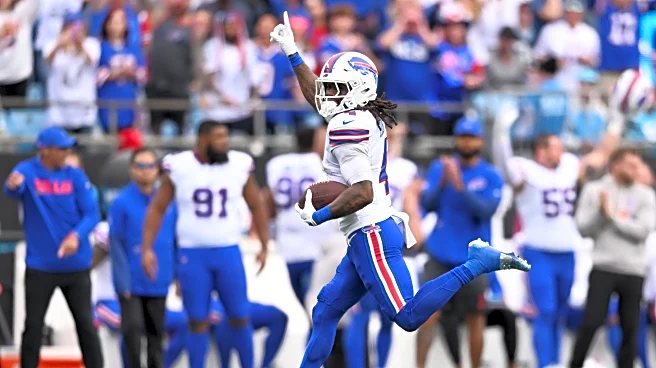The Buffalo Bills shook off a two-game skid with authority, demolishing the Carolina Panthers 40-9, at Bank of America Stadium. Fresh off their bye, Buffalo’s offense amassed 410 yards, led by running
back James Cook who had a career day on the ground, while the defense clamped down for 244 yards allowed, seven sacks, and three turnovers that flipped the script early.
Josh Allen, extending his perfect 9-0 post-bye record, managed 12-of-19 passes for 163 yards and a touchdown plus two rushing scores before resting in the fourth. The Bills (5-2) got back on track, building toward their Week 9 tilt with the Kansas City Chiefs.
Looking at the tape, official box scores, Pro Football Focus (PFF) grades, and NFL Next Gen Stats (NGS), Let’s take a look at what I view as the top three trending up and the top three trending down, whose hiccups exposed flaws that need to be fixed.
Top three Bills players trending up in Week 8
These players were at their best, leading Buffalo’s rebound performance right after the bye.
1. RB James Cook: Historic Ground Assault

James Cook wrote his name in Bills history, erupting for 216 yards on 19 carries (11.4 YPC) with touchdowns on 64- and 21-yard dashes — and sitting after three quarters. His first-half total of 153 yards alone topped any RB’s mark since his brother Dalvin Cook in 2021, demolishing Carolina’s single-game rush surrender record and fueling 245 team yards against the NFL’s eighth-ranked run defense.
Pro Football Focus‘ 91.7 rushing grade for Cook led all NFL backs in Week 8, powered by a league-high 95.2 yards-after-contact-per-attempt and 8.7% big-play rate (10+ yards). Next Gen Stats credited 141 yards before contact, 189 outside tackles, and 12 missed tackles forced — elevating Cook’s season to 785 yards.
Coming from a couple of down games (for his standards) running the ball (98.3 YPG prior two games), Cook’s mastery sends him skyward, morphing the Bills’ ground attack into a true charging bison. If only offensive coordinator Joe Brady could find ways to involve him in the struggling passing attack…
2. DE Michael Hoecht: Debut Disruption Specialist

Making his Bills debut after a six-game PED suspension, Michael Hoecht wasted no time, terrorizing quarterback Andy Dalton with 1.5 sacks (including a strip sack recovered by Deone Walker), a tackle for loss, two QB hits, and six pressures — keying Buffalo’s seven-sack afternoon. His efforts helped limit Carolina’s dynamic ground attack to 114 rushing yards, neutralizing Chuba Hubbard and containing Rico Dowdle.
Hoecht’s 86.4 PFF pass-rush grade ranked second among defensive ends/edge rushers in Week 8, with a 24.1% win rate (top-5 NFL) and 1.3 pressures per snap. Next Gen Stats clocked his get-off at 0.91 seconds (88th percentile), generating a -9.78 defensive EPA — third-best among all defenders.
Signed to a three-year, $21 million deal, Hoecht’s instant impact immediately has him trending upward, bolstering a front reeling from injuries to defensive tackles DaQuan Jones, T.J. Sanders, and Ed Oliver.
3. CB Maxwell Hairston: Rookie Lockdown Debut

Activated from Injured Reserve (IR) for his NFL debut, first-round rookie Maxwell Hairston appeared poise, logging 27 snaps (44% defensive) with one tackle and zero targets in 13 coverage snaps. He helped Buffalo’s secondary slow down Carolina’s passing game, holding Dalton to a 70.7 passer rating and a 4.2 ESPN QBR.
Hairston’s 77.2 overall PFF grade was Buffalo’s second-highest by a corner this season (min. 20 snaps), with an 82.1 coverage mark (top-5 rookies). Next Gen Stats showed a 4.2% target rate against, and two forced incompletions on third down, with 92.5% tackle efficiency. Amid a unit ranked 28th in coverage entering the week, Hairston’s debut trends him up, injecting stability opposite Christian Benford and diminishing Tre’Davious White’s role.
Top three Bills players trending down
The Bills will need more from these players below, or things could go downhill when it matters most.
1. WR Keon Coleman: The clock is ticking

Keon Coleman, the 2024 quasi-first-rounder billed as a big play wide receiver, finished the day with three catches on four targets for 30 yards. His 45-yard average target depth flamed out, yielding zero separation on deep tries and a paltry 1.8 yards-per-route-run (season low). A 48.3 PFF receiving grade (bottom-10 qualifiers) spotlighted a 22% drop rate (team-worst), with 45% separation (down from 62% seasonal, NGS). At 27 catches/under 300 yards (9.9 YPC), Coleman’s contested-catch skill (55% success) hasn’t clicked.
In a chunk-play vacuum, his fade trends downward — and he needs to show urgency to evade bust tags in a questionable group of wide receivers. Getting looks as a punt returner (and getting smashed there) didn’t help, as Brady tries to find ways to maximize his talent.
His less-than-ideal body language, captured by the Bills’ social media team right after the game, doesn’t look good as well. With the trade deadline looming, it’s almost like Keon feels Buffalo is going after another wide receiver, who could end up being his replacement.
2. TE Dalton Kincaid: Injury Echoes Linger

Back from a Week 6 oblique injury absence, tight end Dalton Kincaid suited up for just 14 snaps (22%) and produced one catch for 23 yards on three targets — a red-zone seam bobble that cost the offense points. It’s way too little production from the team’s go-to target in the passing game, and he was seen with his knee iced up after the game, making me question if he’ll ever be able to stay healthy and become the mismatch that quarterback Josh Allen needs him to be.
Pro Football Focus‘ 52.1 overall (61.4 receiving) reflected 3.2 yards-per-route-run (35th percentile) and 2.1-yard average separation (career low, NGS). Prior to the Week 9 game, Dalton was Buffalo’s pass-catching leader (412 yards, 4 TDs), but his rust muted Allen’s day to 163 yards. With 78th-percentile speed dormant, Kincaid trends down short-term — but his seam role begs a Week 9 rebound, as long as he’s healthy enough to do so.
3. WR Elijah Moore: Hands Betray in Big Spots

Elijah Moore, vying for WR3 duties, caught two passes for 28 yards on six targets but dropped two catchable balls per PFF, including a third-down sideline dart by Allen that stalled a drive mid-second quarter. His 1.9 yards-per-route-run was middling, with zero YAC on short routes.
Moore’s 51.2 PFF receiving grade ranked bottom-15 among qualifiers, driven by an 18% drop rate (team-high) and 48% separation (NGS, below his 55% season mark). At five catches on 11 targets and just 75 yards (15.6 YPC), Moore hasn’t been able to impress as one of the main receivers in the lineup — trending him down. What looked like a great opportunity when he signed has become a nightmare season under Brady’s run-first approach.
Honorable Mentions
Trending Up:
- S Jordan Poyer (four tackles; 68.4 PFF coverage grade in early downs role; better fit alongside Bishop than Rapp)
- S Jordan Hancock (three tackles, including a TD-saving one on Rico Dowdle; 74.2 PFF run-defense grade; promising in a third-down role)
- DT Deone Walker (fumble recovery; 76.8 run-defense grade)
- DE A.J. Epenesa (game-sealing INT to CAR 1; 79.4 PFF grade)
- LB Shaq Thompson (five tackles, 1 TFL; 72.1 PFF grade in Milano/Bernard’s absence)
- WR Khalil Shakir (six catches/88 yards/1 TD on seven targets; 82.1 PFF receiving grade)
Trending Down:
- WR Curtis Samuel (0 catches on zero targets in 19 snaps post-ribs return; pre-snap penalty to wipe out first down; 58.3 PFF grade; a complete non-factor)
- DT Ed Oliver (three tackles/1 sack before biceps exit, out indefinitely — fifth missed game in 2025)
- DE Landon Jackson (back as a healthy scratch with Hoecht’s return, despite third-round pedigree, raising development concerns).
Catch up on all this and more with the latest edition of Leading the Charge!
